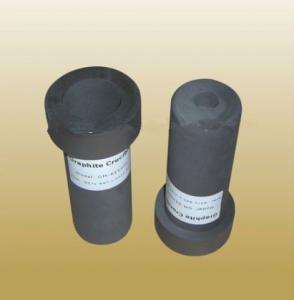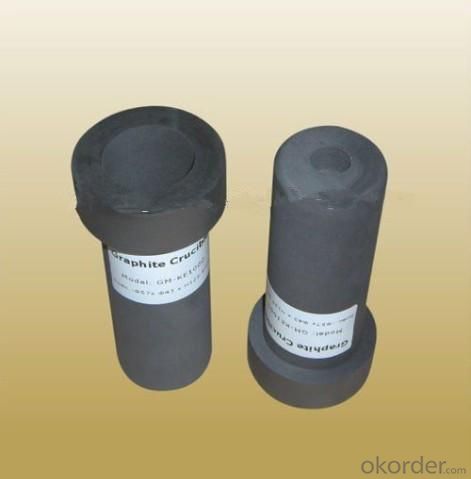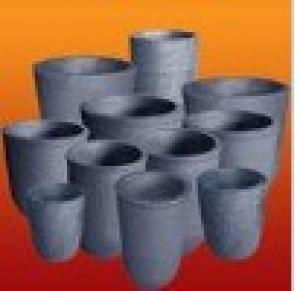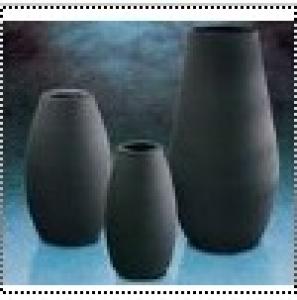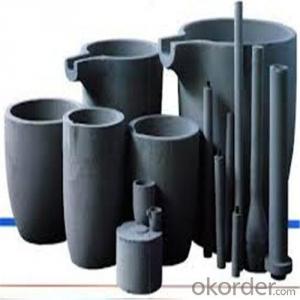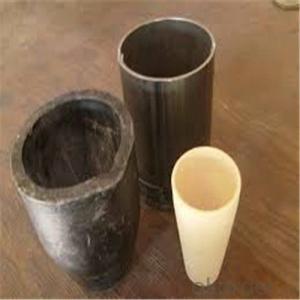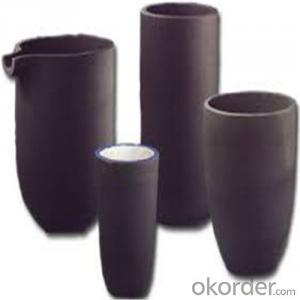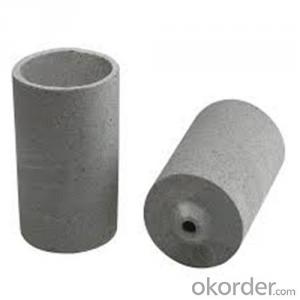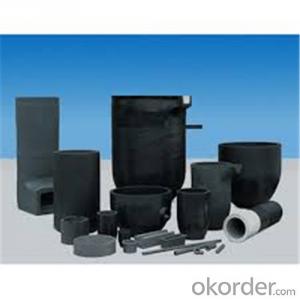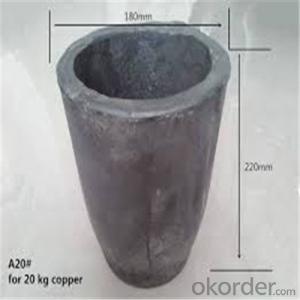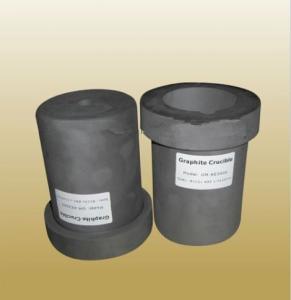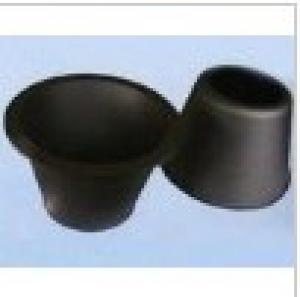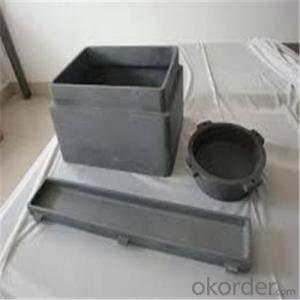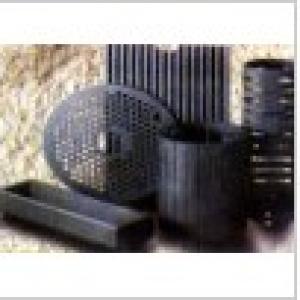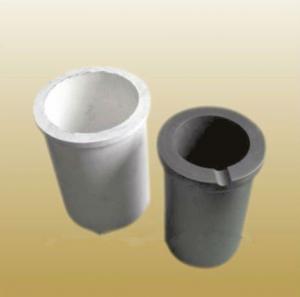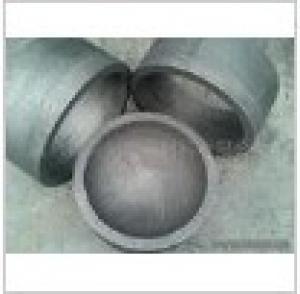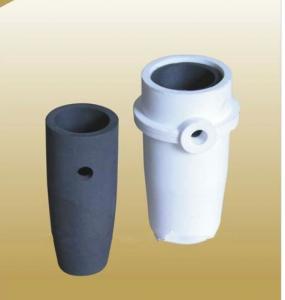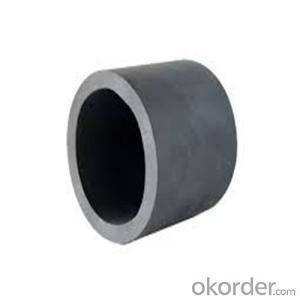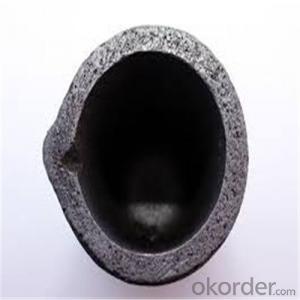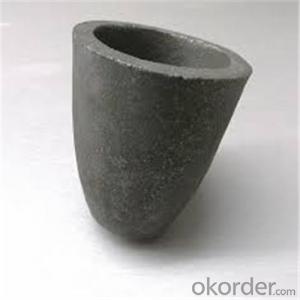30 oz Kerr Graphite Crucible
- Loading Port:
- China Main Port
- Payment Terms:
- TT or LC
- Min Order Qty:
- 50 Pieces pc
- Supply Capability:
- 10000 Pieces per Month pc/month
OKorder Service Pledge
Quality Product, Order Online Tracking, Timely Delivery
OKorder Financial Service
Credit Rating, Credit Services, Credit Purchasing
You Might Also Like
Detailed Product Description
Graphite Crucible with 30 oz/1kg melting capacity which could fit Kerr electro melt oven to melting gold, silver, copper.,etc.
Graphite Crucible 1 Kilo, Fits Kerr Electric Auto Furnace
Item Description
- Graphite Crucible 1 Kilo, Fits Electric Auto Furnace.
- This is a new Graphite Crucible designed for the Hand held Melting Furnace.
- Can be used for all metal types, like gold ,silver,copper etc.
- This model has the groove in the top for the wire type crucible tongs.
- Measurements :
- Top outside diameter (mm) : 57mm
- Top inside diameter (mm) : 43 mm
- Height with the top (mm) : 125.9mm
- Q: Are graphite crucibles suitable for melting composite propellants?
- Composite propellants are generally unsuitable for melting in graphite crucibles. Composite propellants are composed of oxidizers, fuels, and binders, which can be highly reactive and corrosive. Although graphite is known for its high melting point and resistance to high temperatures, it can react with certain components of composite propellants. When exposed to certain oxidizers like ammonium perchlorate, which is commonly found in composite propellants, graphite crucibles can undergo chemical reactions and erosion. This can result in contamination of the propellant and impact its performance. Additionally, the binders used in composite propellants can also react with graphite, causing the crucible to degrade and potentially fail. To melt composite propellants, it is advisable to use crucibles made from materials specifically designed for this purpose, such as ceramic or refractory metal crucibles. These materials have superior resistance to the corrosive nature of composite propellants and can withstand the high temperatures involved in the melting process.
- Q: Why is it a change of gold? Now it's black and muddy
- Drying gold powder: after washing the gold powder into the porcelain evaporation dish, put into the oven drying, that is, orange sponge gold powder particles
- Q: Can a graphite crucible be used for laser melting applications?
- No, a graphite crucible cannot be used for laser melting applications because graphite has a high absorption rate for laser energy, which would cause it to quickly heat up and potentially damage the crucible.
- Q: Are graphite crucibles suitable for melting composite propellants?
- Yes, graphite crucibles are suitable for melting composite propellants. Graphite is known for its high melting point, excellent thermal conductivity, and resistance to chemical reactions, making it an ideal material for containing and heating composite propellants during the melting process.
- Q: How do you prevent graphite crucibles from reacting with the melted material?
- There are several measures that can be taken to prevent the reaction between graphite crucibles and melted material: 1. Prior to use, it is advisable to pre-treat the graphite crucible by heating it in an inert atmosphere like argon or nitrogen. This pre-treatment forms a protective layer on the crucible's surface, preventing any reaction with the melted material. 2. Applying a protective coating on the inner surface of the crucible can also prevent chemical reactions. Materials such as boron nitride, zirconium oxide, or alumina can be used for this purpose. 3. Depending on the reactivity of the melted material with carbon or graphite, it may be more appropriate to use a crucible made of refractory metals like tungsten or molybdenum. 4. The atmosphere in which the crucible and melted material are exposed plays a crucial role in preventing reactions. Using an inert or reducing atmosphere such as argon or hydrogen can minimize reactions and ensure the crucible's stability. 5. Care should be taken to avoid exposing the crucible to excessively high temperatures, as this can accelerate reactions between the crucible material and the melted material. Maintaining temperature within the recommended range is important to prevent such reactions. By implementing these preventive measures, the risk of graphite crucibles reacting with melted material can be significantly reduced, thereby ensuring the integrity of the crucible and the quality of the process or experiment.
- Q: How do you ensure proper sealing of a graphite crucible?
- To ensure a graphite crucible is properly sealed, one can follow a few essential steps: 1. Clean the crucible: Before sealing, it is crucial to ensure the crucible is clean and free from debris, dust, or residues. Gently brush the interior and exterior surfaces with a soft brush or cloth. 2. Inspect for cracks or damage: Carefully examine the crucible for any cracks, chips, or other damage that could compromise its integrity. Replace any damaged crucibles. 3. Apply suitable sealing material: Use high-temperature adhesive or cement designed for crucible sealing. Apply the material evenly along the edges of the crucible lid or cover. 4. Secure the lid tightly: Place the lid onto the crucible, ensuring proper alignment and a snug fit. Apply gentle pressure to secure it in place. 5. Cure or dry the sealing material: Follow the manufacturer's instructions for curing or drying the sealing material. This is crucial for a strong and durable bond. 6. Gradually heat the crucible: Enhance the sealing process by gradually heating the crucible. Place it in an oven or furnace and gradually increase the temperature to activate the sealing material. 7. Slowly cool the crucible: After the sealing material is activated, allow the crucible to cool down slowly. Rapid cooling can cause thermal stress and potential damage. Once at room temperature, the crucible is ready for use. By following these steps, one can ensure a properly sealed graphite crucible, essential for high-temperature applications like metal melting, experiments, or chemical reactions.
- Q: How do you prevent carbon contamination in a graphite crucible?
- There are several steps one can take to prevent carbon contamination in a graphite crucible: 1. Thorough cleaning is essential. Before using the crucible, it should be cleaned meticulously to eliminate any residual carbon or impurities. This can be achieved by scrubbing the crucible with a mild detergent and rinsing it with distilled water. It is crucial to avoid using abrasive cleaners or brushes that could potentially damage the crucible. 2. Preheating the graphite crucible can be beneficial in removing any remaining impurities. This can be accomplished by placing the crucible in a furnace or kiln and gradually increasing the temperature to approximately 1000°C (1832°F). It is important to perform this process slowly to prevent thermal shock and cracking of the crucible. 3. Proper handling is crucial. When handling the graphite crucible, it is important to refrain from touching the interior surface with bare hands, as this could transfer oils and contaminants. It is advisable to wear gloves or use clean, lint-free tools when working with the crucible. 4. Maintaining a controlled atmosphere is another preventive measure. Exposure to air or other reactive gases can lead to carbon contamination. To prevent this, it is recommended to use the crucible in a controlled atmosphere, such as a vacuum or inert gas environment. This can effectively reduce the likelihood of carbon contamination. 5. Overheating should be avoided. Excessive heat can cause the graphite crucible to react with the processed materials, resulting in carbon contamination. It is essential to carefully monitor and control the temperature during heating or melting processes to prevent overheating of the crucible. By adhering to these preventive measures, carbon contamination in a graphite crucible can be significantly minimized, ensuring the purity and integrity of the processed materials.
- Q: What are the considerations for selecting a crucible tongs for handling graphite crucibles?
- When choosing crucible tongs for the handling of graphite crucibles, several factors should be taken into account. Firstly, it is crucial to opt for tongs that have been specifically designed for use with graphite crucibles. Graphite is a brittle material that can be easily damaged if mishandled, therefore it is of utmost importance to select tongs with a smooth and non-abrasive surface to prevent any scratching or chipping of the crucible. The size and weight of the crucible should also be considered when making your tongs selection. It is essential to choose tongs that can securely grip and support the crucible without any risk of dropping or causing damage. Tongs with adjustable jaws or a spring-loaded mechanism can provide more versatility in accommodating various sizes of crucibles. Another crucial consideration is the material from which the tongs are made. Ideally, tongs made from materials such as stainless steel or high-temperature alloys should be chosen. These materials offer excellent heat resistance and durability, ensuring that the tongs can withstand the high temperatures typically encountered during the handling of graphite crucibles. Furthermore, the design and construction of the tongs should be carefully evaluated. Look for tongs that have a sturdy and ergonomic design, with comfortable handles that provide a firm grip. This will enhance both safety and ease of use when handling the crucibles. Finally, it is advisable to take into account the reputation and reliability of the manufacturer or supplier when selecting crucible tongs. Look for trusted brands or suppliers that have a proven track record in providing high-quality and dependable laboratory equipment. In summary, the considerations when selecting crucible tongs for the handling of graphite crucibles include choosing tongs specifically designed for graphite, considering the size and weight of the crucible, selecting tongs made from heat-resistant materials, evaluating the design and construction of the tongs, and considering the reputation of the manufacturer or supplier.
- Q: How long does the graphite crucible extend its service life?
- Must grasp the correct way to use, do not cause unnecessary losses, such as not take good, did not put, broken, and this is a great pity.
- Q: Graphite can react with alkali in high temperature
- Graphite can react with alkali in high temperatureThe chemical properties of graphite are very stable at room temperature and do not react with acids, bases and other substances.
We are always keeping enlarging production scale, perfecting management system, and improving office facilities to expand our markets both at home and abroad.We sincerely welcome clients at home and abroad to come for negotiations.
1. Manufacturer Overview
| Location | Guangdong,China (Mainland) |
| Year Established | 2010 |
| Annual Output Value | |
| Main Markets | North America South America Eastern Europe Southeast Asia Africa Oceania Mid East Eastern Asia Western Europe |
| Company Certifications |
2. Manufacturer Certificates
| a) Certification Name | |
| Range | |
| Reference | |
| Validity Period |
3. Manufacturer Capability
| a) Trade Capacity | |
| Nearest Port | |
| Export Percentage | 61% - 70% |
| No.of Employees in Trade Department | |
| Language Spoken: | |
| b) Factory Information | |
| Factory Size: | 1,000-3,000 square meters |
| No. of Production Lines | Above 10 |
| Contract Manufacturing | OEM Service Offered |
| Product Price Range | |
Send your message to us
30 oz Kerr Graphite Crucible
- Loading Port:
- China Main Port
- Payment Terms:
- TT or LC
- Min Order Qty:
- 50 Pieces pc
- Supply Capability:
- 10000 Pieces per Month pc/month
OKorder Service Pledge
Quality Product, Order Online Tracking, Timely Delivery
OKorder Financial Service
Credit Rating, Credit Services, Credit Purchasing
Similar products
Hot products
Hot Searches
Related keywords
